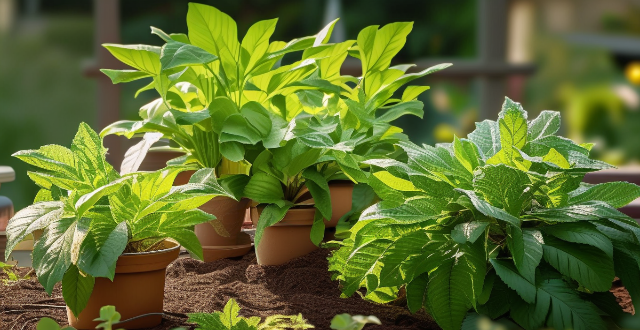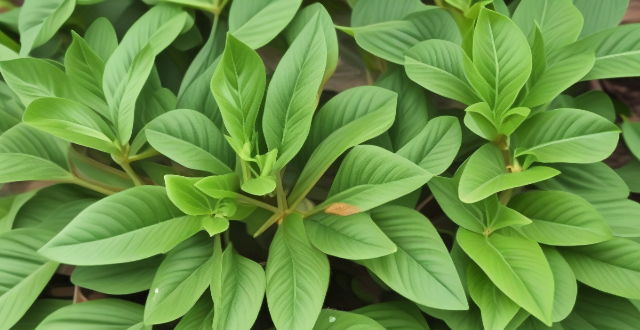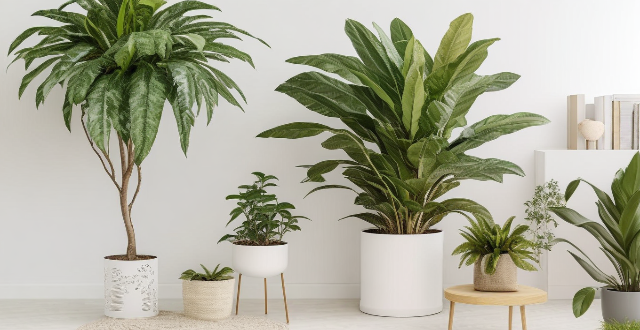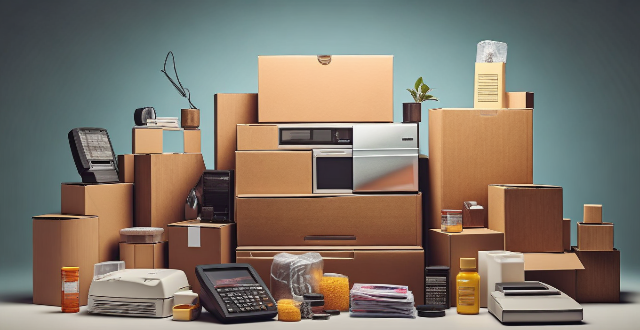Indoor Quality

What is the relationship between energy-efficient buildings and indoor air quality ?
This article explores the relationship between energy-efficient buildings and indoor air quality, highlighting both positive and negative interactions. It defines energy efficiency and indoor air quality, outlines strategies for improving air quality in energy-efficient buildings, and concludes that it is possible to achieve both goals through careful design and maintenance practices.

How can I revive a dying indoor plant ?
Reviving a dying indoor plant requires patience, care, and attention to detail. Here are some steps you can take to help your plant recover: Identify the problem, adjust watering schedule, provide adequate sunlight, fertilize appropriately, prune dead leaves and stems, repot if needed, monitor for pests and diseases, maintain humidity levels. By following these steps and providing regular care and attention, you can revive a dying indoor plant and help it thrive once again.

What kind of indoor games can parents play with their children to strengthen their bond ?
The article provides a list of indoor games that can help strengthen the bond between parents and children. The games include board games like Monopoly and Chess, card games such as Uno and Go Fish, puzzles and brain teasers like Sudoku and crossword puzzles, arts and crafts activities, indoor treasure hunts, and cooking/baking projects. These games not only provide entertainment but also offer opportunities for learning and quality time spent together.

Should I use fertilizer for my indoor plants, and if so, how often ?
Fertilization is crucial for indoor plants, providing essential nutrients for growth. The need for fertilizer depends on factors like plant type, soil quality, and light exposure. Most indoor plants benefit from monthly fertilization during the growing season, while slow-growing plants may need it less frequently. Signs of nutrient deficiency can guide adjustments to the fertilization schedule. Choosing the right fertilizer involves considering its type (synthetic or organic) and NPK ratio. Proper application includes diluting the fertilizer, watering beforehand, and avoiding direct contact with leaves and stem. Balancing nutrients and care ensures healthy plant growth without the risks of over-fertilization.

How often should I water my indoor plants ?
Indoor plants require proper watering to thrive. The frequency of watering depends on soil moisture, plant type, and environmental conditions. Most houseplants benefit from being watered every 7-14 days, while succulents and cacti can go longer between waterings. It's important to check the soil before watering and adjust your routine based on the plant's health and growth patterns. With proper care, your indoor plants will thrive and bring life to your space.

What kind of soil is best for indoor plants ?
The ideal soil for indoor plants should be well-draining, lightweight, and rich in nutrients. It should contain ingredients like perlite or sand to improve drainage, be lightweight to allow better aeration and root growth, and provide essential nutrients such as nitrogen, phosphorus, and potassium. Popular soil mixes for indoor plants include potting soil mix, coco coir mix, orchid bark mix, and cactus and succulent mix. Each of these mixes caters to different types of plants and their specific needs.

What are the best indoor plants for low-light conditions ?
The best indoor plants for low-light conditions include Pothos, Snake Plant, Philodendron, Peace Lily, and ZZ Plant. These plants are adaptable, easy to care for, and known for their ability to purify the air. They come in various sizes and shapes, making them suitable for different preferences and spaces.

How should I spend a rainy weekend in a city ?
This text provides a guide on how to spend a rainy weekend in a city. It suggests staying indoors and enjoying the coziness of home by reading a book, watching movies or TV shows, and cooking or baking something delicious. It also recommends visiting indoor attractions like museums and art galleries, shopping malls, and indoor sports facilities. The text suggests pampering oneself with a spa day or attending a yoga or meditation class. Socializing and networking at events or meetups or visiting local cafes is another option. Lastly, it encourages embracing the rain outdoors by taking a walk or capturing the beauty of the city through photography.

What impact does air pollution have on indoor sports facilities and athletes' health ?
Impact of Air Pollution on Indoor Sports Facilities and Athletes' Health: - **On Indoor Sports Facilities**: - Reduced visibility, unpleasant odors and tastes, equipment damage, and increased energy consumption due to air pollutants. - **On Athletes' Health**: - Respiratory problems, cardiovascular disease, asthma attacks, skin irritation, fatigue and lethargy, cognitive impairment, and immune system suppression due to exposure to air pollutants.

Is it necessary to mist indoor plants regularly ?
Is misting indoor plants necessary? Misting can increase humidity and cleanliness, but also lead to over-watering, pests, and disease. It's beneficial for tropical plants and during dry seasons, but not always necessary. Use warm water, avoid direct sunlight, target leaves, and don't overdo it.

How do I prune my indoor plants correctly ?
Pruning indoor plants is crucial for their health, shape, and beauty. Here's a step-by-step guide on how to prune your indoor plants correctly: 1. **Assess the Plant**: Identify any dead or damaged leaves, stems, or branches and remove them first to prevent disease and insect infestations. 2. **Gather the Right Tools**: Sharp scissors or pruners, pruning shears for larger plants with thicker stems, and garden gloves to protect your hands from sharp edges and sap. 3. **Start Pruning**: Follow guidelines for pinching back, shaping and thinning, and removing dead flowers and stems. 4. **Post-Pruning Care**: Water thoroughly after pruning, apply a balanced fertilizer, ensure adequate sunlight or artificial light, and monitor for signs of stress or disease following pruning.

What is the ideal temperature for indoor plant growth ?
Indoor plants generally thrive in temperatures between 65°F to 75°F during the day and slightly cooler at night, along with proper humidity and air circulation. Maintaining these conditions helps promote healthy growth and flowering. Use a thermometer, avoid drafts, and adjust heating or cooling as needed to keep plants comfortable.

How much sunlight do indoor plants need ?
Indoor plants require sunlight for photosynthesis, but the amount needed varies by species. General guidelines include low light tolerance for plants like Peace Lily and Snake Plant, medium light requirements for Dracaena and Pothos, and high light preference for Cacti and Succulents. Key considerations involve window orientation and artificial lighting. Success tips include researching plant needs, monitoring response, and gradual adjustment to new lighting conditions.

What are the most common pollutants measured in air quality monitoring ?
Air quality monitoring is crucial for identifying pollutants that can harm human health and the environment. The most common pollutants measured include particulate matter, nitrogen oxides, sulfur dioxide, carbon monoxide, ozone, and volatile organic compounds. These pollutants can cause respiratory problems, contribute to smog and acid rain, and have negative impacts on crops and vegetation. By tracking these pollutants, governments and organizations can take steps to reduce their emissions and improve air quality.

How do I propagate my indoor plants ?
Propagating indoor plants is a rewarding activity that allows you to expand your collection without spending much money. Here's a step-by-step guide on how to propagate your indoor plants: 1. Choose the right plant: Some common houseplants that are easy to propagate include pothos, succulents, snake plants, and spider plants. Make sure to choose a plant that is healthy and free from pests or diseases. 2. Gather your tools: You will need some basic tools for propagation, including sharp scissors or pruners, clean pots with drainage holes, potting soil, and possibly rooting hormone (depending on the plant). 3. Choose a method of propagation: There are several methods of propagation, including stem cuttings, leaf cuttings, division, and layering. The method you choose will depend on the type of plant you have. 4. Prepare your cuttings: Using sharp scissors or pruners, make clean cuts just below a node (the point where leaves attach to the stem) on your chosen plant. Remove any lower leaves that would be below the soil line as these can rot and cause problems later on. 5. Plant your cuttings: Fill your pots with fresh potting soil making sure there are drainage holes at the bottom. Make a small hole in the soil and insert your cutting about halfway down. Water gently to settle the soil around the cutting. 6. Provide proper care: Place your newly planted cuttings in a warm bright location but out of direct sunlight Keep the soil moist but not waterlogged Avoid letting it dry out completely You may also want to cover your pot with a plastic bag or dome to create a humid environment which helps promote root growth. 7. Be patient and observe growth It can take several weeks to months for your cuttings to develop roots and new growth Once you see new leaves forming you know that your plant has successfully rooted and is ready to continue growing independently. 8. Transplant if needed Once your plant has outgrown its current pot or seems rootbound it's time to transplant it into a larger container with fresh potting soil Be gentle when handling the delicate new roots during transplantation.

How do weather conditions affect air quality ?
Weather conditions significantly affect air quality by influencing the dispersion, accumulation, and transformation of pollutants. High temperatures can increase ozone levels, while low temperatures can trap pollutants near the ground. Wind helps disperse pollutants, improving air quality, but calms can lead to pollutant buildup. Precipitation, like rain and snow, can wash pollutants from the air. High humidity promotes ozone formation but aids in particle removal, whereas low humidity inhibits some pollutants and suspends dust. Temperature inversions trap pollutants, degrading air quality, while cold fronts and storms can clean the air through winds and precipitation.

How does exercise affect sleep patterns and quality ?
Exercise significantly influences sleep patterns and quality. Immediate effects include increased alertness and better body temperature regulation for sleep. Long-term, regular exercise improves sleep quality and regulates sleep patterns. Different types of exercise—aerobic, anaerobic, and mindful movements like yoga—all positively affect sleep but may require varying recovery times. The timing of exercise is crucial; morning workouts set the day's tone with minimal sleep interference, while late-night exercises can hinder sleep preparation. Tailoring workout routines to individual needs optimizes rest and overall well-being.

Are there any indoor plants that are safe for pets ?
Indoor plants can be a great addition to any home, but it's important to choose ones that are safe for pets. Here are some options: 1. Spider Plant 2. Boston Fern 3. Peace Lily 4. Bamboo Palm 5. Christmas Cactus 6. Rubber Plant 7. Ponytail Palm 8. Friendship Plant 9. Parlor Palm 10. Heartleaf Philodendron

How do I choose the right pot for my indoor plants ?
Choosing the right pot for indoor plants is crucial for their growth and development. Consider factors like plant size, drainage needs, material, style, and maintenance when selecting a pot. Ensure proper drainage to prevent root rot, choose materials that suit your plant's needs and your home's style, and be prepared for the care requirements of different pot types.

How do I prevent pests from infesting my indoor plants ?
To prevent pests from infesting your indoor plants, maintain proper hygiene, optimize growing conditions, utilize natural repellents and treatments, try physical removal methods, consider biological control, and use chemical control as a last resort. Regular plant inspection is also key for early detection of potential problems.

Why are the leaves of my indoor plant turning yellow ?
Yellowing leaves on indoor plants can indicate various issues, including improper watering, nutrient imbalances, unsuitable lighting, temperature stress, pest infestations, diseases, physical damage, or natural aging. Addressing these concerns involves adjusting watering habits, providing adequate light, using appropriate fertilizers, maintaining ideal temperatures, monitoring for pests and diseases, handling plants gently, and regular pruning. Understanding and responding to these factors can help restore the plant's health and prevent future leaf discoloration.

How does an active lifestyle affect sleep quality ?
The text discusses how an active lifestyle can positively affect sleep quality. It outlines the benefits of physical activity for sleep, such as improved sleep onset, increased deep sleep, reduced sleep disturbances, enhanced REM sleep, and better sleep efficiency. The mechanisms underlying this relationship are also explored, including thermoregulation, stress reduction, neurotransmitter regulation, circadian rhythm alignment, and muscle relaxation. Practical tips for incorporating physical activity into one's routine are provided, such as choosing appropriate activities, establishing a routine, avoiding late-night workouts, being mindful of intensity, and incorporating relaxation techniques. Overall, the text emphasizes the importance of regular exercise for improving sleep quality and suggests ways to optimize its benefits.

How do I know if the discounted items at Outlet Stores are of good quality ?
Outlet stores offer discounted items, but it's important to assess their quality before buying. Check for manufacturer defects, research brand reputation, compare prices with non-discounted items, and ask about return policies.

Can meditation or mindfulness practices enhance sleep quality ?
Meditation and mindfulness practices have been gaining popularity for their potential benefits on mental and physical health, including improving sleep quality. These practices involve focusing one's attention on the present moment while calmly acknowledging and accepting one's feelings, thoughts, and bodily sensations. Meditation and mindfulness can enhance sleep quality by reducing stress and anxiety, promoting relaxation, and increasing awareness of sleep habits. To practice meditation or mindfulness for better sleep, individuals should set aside time each day, choose a comfortable environment, focus on their breath, cultivate gratitude and positive thinking, and be patient and persistent in their practice.

Are the products in sample sales of good quality ?
Sample sales are a popular way for retailers to clear out old inventory, showcase new products, and offer discounts to customers. However, the question remains: are the products in sample sales of good quality? In this article, we will explore this topic in detail. Factors affecting product quality in sample sales include the age of the product, condition of the product, quality control, and manufacturing defects. While there are pros to buying from sample sales such as discounted prices and unique finds, there are also cons such as limited selection and no returns or exchanges. To minimize risks associated with buying from sample sales, it is important to do research, inspect products carefully, ask questions, set realistic expectations, and be prepared to take risks. By following these tips, you can potentially score great deals on high-quality products from sample sales.

How does sleep quality affect athletic performance and health ?
This text explains how sleep quality affects athletic performance and overall health. It emphasizes the importance of sleep for physical recovery, mental well-being, and immune system support in athletes. Poor sleep quality can lead to decreased performance, increased injury risk, and mental health issues. The text provides tips for improving sleep quality, such as establishing a consistent sleep schedule and creating a comfortable sleep environment. Adequate sleep is crucial for optimal athletic performance and overall health.

How can parents balance work and providing quality education at home ?
Balancing work and providing quality education at home can be a challenging task for parents. However, with proper planning and execution, it is possible to achieve both goals effectively. In this article, we will discuss some strategies that parents can use to balance their work responsibilities while ensuring their children receive a high-quality education at home.

What is air quality monitoring and why is it important ?
Air quality monitoring is crucial for public health, environmental protection, and socio-economic decision making. It involves measuring pollutants like particulate matter, nitrogen dioxide, sulfur dioxide, carbon monoxide, and ozone to assess their impact on human health, the environment, and society. Poor air quality can cause respiratory diseases, cardiovascular problems, nervous system disorders, developmental issues in children, and increase cancer risks. It also contributes to acid rain, ozone depletion, habitat destruction, and global warming. Socio-economically, poor air quality leads to increased healthcare costs, lost work days, reduced tourism, and lower property values. Air quality monitoring data helps individuals make informed decisions, governments create regulations, and influence public policy.